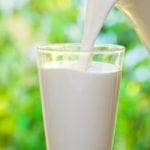 Creepy
Creepy  Creepy
Creepy  Technology
Technology 10 Scientific Breakthroughs of 2025 That’ll Change Everything
 Our World
Our World 10 Ways Icelandic Culture Makes Other Countries Look Boring
 Misconceptions
Misconceptions 10 Common Misconceptions About the Victorian Era
 Mysteries
Mysteries 10 Strange Unexplained Mysteries of 2025
 Miscellaneous
Miscellaneous 10 of History’s Most Bell-Ringing Finishing Moves
 History
History 10 Great Escapes That Ended Right Back in Captivity
 Weird Stuff
Weird Stuff 10 Fascinating Things You Might Not Know About Spiders
 Food
Food 10 Everyday Foods You Didn’t Know Were Invented by the U.S. Military
 History
History 10 Odd Things Colonial Americans Kept at Home
 Creepy
Creepy 10 More Representations of Death from Myth, Legend, and Folktale
 Technology
Technology 10 Scientific Breakthroughs of 2025 That’ll Change Everything
 Our World
Our World 10 Ways Icelandic Culture Makes Other Countries Look Boring
Who's Behind Listverse?

Jamie Frater
Head Editor
Jamie founded Listverse due to an insatiable desire to share fascinating, obscure, and bizarre facts. He has been a guest speaker on numerous national radio and television stations and is a five time published author.
More About Us Misconceptions
Misconceptions 10 Common Misconceptions About the Victorian Era
 Mysteries
Mysteries 10 Strange Unexplained Mysteries of 2025
 Miscellaneous
Miscellaneous 10 of History’s Most Bell-Ringing Finishing Moves
 History
History 10 Great Escapes That Ended Right Back in Captivity
 Weird Stuff
Weird Stuff 10 Fascinating Things You Might Not Know About Spiders
 Food
Food 10 Everyday Foods You Didn’t Know Were Invented by the U.S. Military
 History
History 10 Odd Things Colonial Americans Kept at Home
10 Weird And Untold Facts About Milk
Milk is one of the most popular and important beverages on the planet. We drink it when we’re babies, and when we get older, we use it in everything from ice cream to coffee. In fact, we drink it so often that most people probably take it for granted. So let’s take a step back and give milk a fresh, new look because this white liquid is really, really weird.
10Cownnibalism

Here’s an icky question. If you saw a cow eating another cow, would you drink its milk? The next time you go to the grocery store, you might want to mull that over for a bit because that milk you’re about to buy probably came from a cannibal.
Dairy farmers need cheap ways to keep cows healthy, happy, and squirting out milk. To fill up those jugs, bovines need a lot of energy. That’s where rendered fat enters the equation. Rendering plants take dead animals and turn those corpses into tallow. Around half of that fat is added into animal feed. So when Bessie starts chowing on her daily dose of grain, she’s probably eating her cousin.
This sounds like something out of a futuristic horror movie, but cow cannibalism isn’t really that big a deal. It is if you’re feeding them ground-up protein, which can cause mad cow disease, but rendered fat is totally fine. In fact, it’s a lot better than most vegetarian options. Tallow is easier on a cow’s digestive tract than foods like sunflower seeds, increases fertility, and helps cows take milk production up a notch. And if you were to replace animal fat with grain, you’d need three million acres of corn to make up the difference. That would surely affect grocery bills.
So while cows eating cows is a pretty odd thought, perhaps we should just relax and enjoy a nice glass of cannibal milk.
9Cows Enjoy Listening To Slow Jams (Maybe)

The next time you buy a jug of milk, you might want to thank Lou Reed. According to a 2001 study by researchers at the University of Leicester, the Lou Reed song “Perfect Day” puts cows in the mood to make milk.
Songs with less than 100 beats per minute can increase milk production by 3 percent. Scientists think these magic melodies relax the animals, letting them produce milk in higher quantities.
Other slow tunes that seem to work are “Bridge over Troubled Water” by Simon and Garfunkel, “What a Difference a Day Makes” by Aretha Franklin, and “Everybody Hurts” by R.E.M. However, this all depends on whom you ask. While the people at Leicester stand by their study, the folks at Canada’s Department of Agriculture and Agri-Food are skeptical.
According to the Canadians, no one has repeated these experiments since 2001, which is a bit troubling. Also, if the music actually has an effect, it probably has nothing to do with the songs themselves. Instead, the music likely drowns out all the disconcerting sounds coming from those milking machines.
But hey, if you’ve got a couple of cows, it probably wouldn’t hurt to play “Moon River” by Danny Williams, just in case.
8Skim Milk And Creamy Fabric
Once upon a time, nobody drank skim milk. A byproduct of the butter-making process, skim milk was treated like garbage and dumped into rivers along with buttermilk and whey. In the 1920s, Wisconsin dairy plants were pouring over 18,000 kilograms (40,000 lb) of these untreated milk products into the state’s waterways annually, and things were getting smelly.
Facing pressure to stop stinking up the countryside (and stop being wasteful to boot), dairy companies started coming up with new uses for skim milk. In the 1940s, they sold it dried to the Allies, and in the 1950s, companies claimed skim milk could help you lose weight. Suddenly, it was a supermarket staple. But perhaps the most interesting use for skim milk had to do with the protein casein.
In the 1930s, scientists in Italy and America extracted casein from skim milk, turned it into fiber, and used it in all sorts of projects. Need to upholster car seats? Casein can do that. Want to make a fake fur hat? Casein to the rescue! In fact, people thought casein was going to be the next big thing in fashion, but interest in creamy clothing began to wane in the late 1940s.
However, in the last few years, casein has become fashionable again thanks to German designer Anke Domaske. Founder of fashion label Mademoiselle Chi Chi, Domaske has taken skim milk clothing to the next level. In 2011, she invented a new fiber called QMilch, or QMilk. QMilch is far more eco-friendly than the casein products of the 1930s and ‘40s. It’s made of milk unfit for human consumption, and Domaske’s process excludes the dangerous chemicals normally associated with textile production.
The casein is taken from dried milk, and then it’s set inside a machine that chops it. Next, it’s heated and then spun into thin yarn. Once the fiber is finished, it’s ready for Domaske to use in her new designs. And don’t worry. You can totally wash it, and it won’t go sour. It’s also easy on the skin, which is good news for people who are allergic to cotton.
7Boys And Girls Get Different Milk

You’ve probably noticed by now, but men and women are different, biologically. Our bone structure is pretty distinct, the plumbing is all different, and unless gynecologists get their hands on some Arnold Schwarzenegger science, men won’t be giving birth anytime soon. And that’s not all. Women live longer than men, guys are better at handling sleep deprivation, and ladies are pretty amazing when it comes to spotting colors.
We also get different milk as babies.
In a study done on rhesus macaques, a mother’s milk changed depending on whether she gave birth to a male or female. If Momma Macaque had a boy, her milk would contain 35 percent more fat than if she’d had a girl, and it would be loaded down with proteins. That’s probably because young male monkeys are more active and need that extra energy. But if Momma Macaque had a daughter, her milk would be high in calcium to give that girl strong bones. In addition to the extra minerals, female monkeys drink higher quantities of milk than males, and over time, their fat intake eventually equals their brothers’.
Animals besides macaques make different milk. Cows, gray seals, and red deer do it, too—and so do humans. Scientists from Michigan State University ran tests on 72 Kenyan women and found that they produce fattier milk for boys than for girls. Other differences are even weirder. For example, they found that poor mothers produce creamy milk for their girls, but well-to-do mothers from Massachusetts produce milk with more energy for boys. So not only is human milk different for boys and girls, it also seems to change based on social circumstances.
While multiple theories explain why mothers produce different kinds of milk, scientists have yet to figure it all out. Many researchers think this discovery should influence the way companies produce milk formula for infants. Those early days of milk-drinking have a lasting effect on the way kids develop, and scientists suggest that businesses should adapt their products to suit different sexes.
6Most People Can’t Digest Milk

Pour yourself a bowl of cereal, and take a couple of bites. If you can eat the whole thing without coming down with diarrhea, congratulations! You’re a mutant.
While many of us take milk-drinking for granted, 60 percent of adults on Earth just can’t handle the white stuff. When most humans stop drinking their mother’s milk, they stop producing lactase, the enzyme that digests the key sugar in milk. Without a steady supply of lactase, you become lactose intolerant, and if you take a gulp of milk, you’ll end up with cramps, bloating, or nausea.
The other 40 percent, many of whom come from Europe, Africa, and India, are genetic anomalies. Thanks to an ancient mutation, their bodies still produce lactase, and that’s why they can drink milk after babyhood. Scientists believe this milk mutation popped up around 10,000 B.C., near present-day Turkey.
No one is sure why this milk-friendly gene showed up or how it spread so quickly through Europe. For a while, researchers thought ancient Europeans lacked sunlight and adapted new ways of processing vitamin D. Others think the gene showed up as a way of supplementing European diets, so people could drink milk when crops died. Others suggest it was a way of making women fatter and thus more fertile.
Scientists have a better idea of how Africans developed their milk-drinking mutant powers. While only about 25 percent of people of African descent can digest lactose, scientists think this ability has to do with the problem of drinking water. Originally, African farmers had to drink out of ponds or rivers, and that was incredibly risky thanks to germs. So Africans eventually developed the ability to process milk and thus avoid horrible diseases.
5The Weird World Of Online Breast Milk

While the US government has strict policies on fluids like blood and semen, breast milk is treated as a food. That means you can sell it to whomever you want, however you want. A lot of mothers donate their extra milk to nonprofit banks that pasteurize it and sell it to hospitals for $130 per liter ($4 an ounce). However, more and more mothers are turning their back on FDA-approved facilities. Instead, they’re going online and selling their milk on sites like Only the Breast.
Founded by California couple Glenn and Chelly Snow, Only the Breast lets mothers sell their surplus milk to women who can’t make enough of their own . . . and to the occasional man who wants a few ounces for one reason or another. Sellers hawk their wares with catchy titles like “Fresh and Fatty!” and sales pitches like “mostly organic-raised breast milk.” There are sections on the site for specialized milk, so if you need a few bags specifically for two-month-olds or only want milk that’s bafflingly labeled “gluten-free” or “dairy-free,” Only the Breast has you covered.
The popular site has branched out across Europe. Women sell their milk from anywhere from $1 to $2.50 per ounce, so if a mother sells about 1 liter (30 oz) a day (the standard amount needed by a six-month-old infant) for $2 an ounce, she could easily clear $20,000 in a year. However, some women aren’t interested in the money. Mothers who want to help other women for free can join online groups like Eats on Feets, an organization that provides free milk for needy mothers.
The government isn’t exactly crazy about this new online movement. Unlike professional milk banks, Only the Breast and Eat on Feets aren’t required to screen donors or pasteurize milk. The FDA issued a warning in 2010, stating that it’s dangerous to let your baby drink someone else’s milk. A study from Stanford University found that 3.3 percent of 1,091 potential milk donors were suffering from sicknesses like syphilis, hepatitis B, and HIV.
4The Wonders Of Bird Milk

Mammals aren’t the only ones who make milk. A few birds can, too.
Take pigeons. These city-dwelling “rats of the sky” produce a thick, milk-like substance for their babies, and it’s a crucial part of a young squab’s diet. Pigeon milk is generated inside the crop, a storage area in the esophagus. The crop works like an internal pantry, and lactating cells in the crop walls release a thick fluid that baby birds find delicious.
Both mothers and fathers produce this milk a few days before the chicks hatch. When the chicks are hungry, the parents open their beaks and upchuck all that creamy goodness. If young wild pigeons don’t get their crop milk, they die. Scientists have also found that chickens grow 38 percent faster when they’re fed a diet of pigeon vomit. That’s probably because the fluid is rich in antioxidants, protein, and fat. In fact, crop milk has more protein than human milk (or cow milk, for that matter).
Pigeons aren’t the only birds that have mastered milk-making. Flamingoes keep their babies happy with a special substance produced in their digestive tracts. And if Mom doesn’t make it back in time from her fishing trip, Daddy Emperor Penguin can cough up some crop milk for his newly hatched chick as well.
3Why Is Milk In The Back Of The Store?

You wake up one morning, and you’re getting ready to eat some cereal when you realize you’re out of milk. You angrily slip on a pair of shoes, drive to the local grocery store, and trudge toward the dairy section. But it’s all the way behind the chips and the soda and the items we can safely call “non-essential.” In many countries, milk is a huge part of the daily diet, so what’s it doing in the back?
There are two reasons. The first has to do with a little trick called “building the basket.” If you walk to the back of the store, you’ll pass frozen dinners, mountains of junk food, and all sorts of products just begging to be bought. Store owners hope you’ll notice all these goodies on your long march to the milk, and if their subliminal scheme works, you’ll go home with a basket full of food.
The second reason is far less nefarious and has to do with another supermarket expression: the cold chain. Once a cow is milked, the liquid has to stay nice and frosty. Otherwise, it quickly spoils. So the milk is loaded in a temperature-controlled truck, driven down the highway, and dropped off at the back of the store, where it’s quickly off-loaded into a cold room. The dairy section is close to this cold room. This makes the process easy, fast, and keeps the milk tasting great.
So milk’s location is one part convenience and one part conspiracy. Plus, it helps burn of all that fat you get from drinking whole milk.
2The Mystery Of Witch’s Milk

Most people assume that only females can breastfeed, but men are perfectly capable of producing milk. All they need is a lot of prolactin. That’s the hormone in charge of making milk, and it’s already in the body. Men just need to boost it up a bit.
There are a couple of ways men can increase their prolactin levels, but most aren’t very pleasant. They can suffer from a pituitary gland tumor, screw up their liver by starvation, or take drugs to alter the body chemistry. Or they could start massaging their nipples. Seriously—by stimulating the nipples, guys can get a spike of prolactin that causes the alveoli in their breasts to start making milk.
This peculiar phenomenon isn’t exclusive to humans. Scientists have observed male lactation in dayak fruit bats, goats, and guinea pigs.
Human babies can also make milk on occasion. It’s called “Witch’s Milk,” and it generally occurs three days after the infant is born. The baby’s breasts swell up, and the newborn nipples leak milky white fluid.
While the fetus develops, the mother’s body produces a lot of estrogen, which enlarges her breasts. That estrogen also courses through the baby’s bloodstream, and on occasion, these hormones enlarge the newborn’s breasts and cause infants to make milk. It’s nothing to worry about. The swelling usually goes away after two weeks—but people didn’t always know that.
Back in the Middle Ages, people feared witchcraft. They thought witches used babies to provide milk for familiars, spirits who took the shape of animals like toads. So if your baby started lactating, look out. There were demons about. In fact, some parents were so afraid of familiars creeping into their newborn’s crib that they made baby-sized rag dolls to trick the spirits into suckling a puppet.
1The Man Who Wants To Milk A Pig

When it comes to milk, most Americans rely on the good old cud-chewing cow. On occasion, they’ll pick up a carton of goat’s milk or buy a block of cheese courtesy of Mary’s little lamb. But that’s as far as it goes for dairy diversity in the US.
But the rest of the planet is far more willing to experiment. Camel milkshakes are all the rage in Abu Dhabi, and in Campania, Italy, cheese-makers use water buffaloes to make mozzarella di bufala. Folks in central Asia enjoy a beverage called kumis, which is fermented horse milk, and in various countries across the globe, people drink the milk of yaks, reindeer, and elk.
But there’s one mammal nobody seems all that interested in milking. We’re talking about Sus scrofa domesticus, more commonly known as the domestic pig. We aren’t spreading pig butter on our biscuits or drinking chocolate pig’s milk because swine aren’t the most touchy-feely creatures in the world. Grab one of these animals, and you’ll have a fight on your hands.
Assuming you can hold one down, you’re going to have a tough time with those teats. Pigs have 14 tiny nipples that are incredibly difficult to squeeze. Making things worse, pig milk doesn’t coagulate easily, so it’s difficult to turn into cheese. But that doesn’t stop Chef Edward Lee from trying.
Owner of the 610 Magnolia in Louisville, Lee has appeared on shows like Top Chef and Iron Chef America, and he’s kind of obsessed with pigs. Describing pig milk as “viscous” and “tart,” Lee has been trying to make pig cheese for quite some time. It’s been difficult. While he did whip up a batch of pig ricotta, that required sneaking up on pigs while they were sleeping, quickly pulling their teats, and taking off when the sows woke up.
Figuring there was a better way, Lee came up with a new game plan earlier in 2014. In March, Lee announced that he was going to spend weeks living in barns with momma pigs, gaining their trust. He was going to smear his clothes in pig feces, hang out with the hogs, and become their best bud. Lee figures that if he can win their friendship, they might let him have a go at their teats.
If Lee’s plan goes well, his restaurant might become one of the first places to serve pig cheese. Want to give it a shot yourself, and beat him to it?
Nolan Moore actually hates milk. If you want, you can friend/follow Nolan on Facebook, or you can send him an email.








